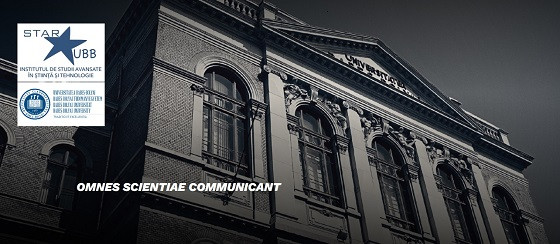Star-UBB Seminar Series:- Cosmological models with arbitrary spatial curvature in the theory of gravity with non-minimal derivative coupling
The research team investigates isotropic and homogeneous cosmological scenarios in the scalar-tensor theory of gravity with non-minimal derivative coupling of a scalar field to the curvature given by the term (ζ/H₀²)Gᵘᵛ∇ᵤϕ∇ᵥϕ in the Lagrangian. In general, a cosmological model is determined by six dimensionless parameters: the coupling parameter ζ, and density parameters Ω₀ (cosmological constant), Ω₂ (spatial curvature term), Ω₃ (non-relativistic matter), Ω₄ (radiation), Ω₆ (scalar field term), and the universe evolution is described by the modified Friedmann equation. In the case ζ=0 (no non-minimal derivative coupling) and Ω₆=0 (no scalar field) one has the standard ΛCDM-model, while if Ω₆≠0 -- the ΛCDM-model with an ordinary scalar field. As is well-known, this model has an initial singularity, the same for all k (k=0,±1), while its global behavior depends on k. The universe expands eternally if k=0 (zero spatial curvature) or k=−1 (negative spatial curvature), while in case k=+1 (positive spatial curvature) the universe expansion is changed to contraction, which is ended by a final singularity. The situation is crucially changed when the scalar field possesses non-minimal derivative coupling to the curvature, i.e. when ζ≠0. Now, depending on model parameters,
(i) There are three qualitatively different initial state of the universe: an eternal kinetic inflation, an initial singularity, and a bounce. The bounce is possible for all types of spatial geometry of the homogeneous universe;
(ii) For all types of spatial geometry, the universe goes inevitably through the primary quasi-de Sitter (inflationary) epoch when a(t)∝e^[hₔₛ(H₀t)] with the de Sitter parameter hₔₛ²=1/9ζ−8ζΩ₂³/27Ω₆. The mechanism of primary or kinetic inflation is provided by non-minimal derivative coupling and needs no fine-tuned potential;
(iii) There are cyclic scenarios of the universe evolution with the non-singular bounce at a minimal value of the scale factor, and a turning point at the maximal one;
(iv) There is a natural mechanism providing a change of cosmological epochs.
時間:2024.01.25(四) 17:00~18:00
頻道:Zoom ID:853-7454-4159 ←
講者:Prof. Sergey Sushkov (Institute of Physics, Kazan Federal University, Kazan, Russia)
語言:英語
【此屬轉載信息,以主事單位發布為準】
Scientific and Technological Advanced Research- Babeș-Bolyai University(Star-UBB) Seminar Series in Gravitation, Cosmology and Astrophysics
Presently a period of rapid and intense change are being witnessed in our understanding of the gravitational force, at a rate that is quickly increasing since the important observational discoveries of the late 1990s. With the advent of new observational techniques, the emergence of important cosmological and astrophysical paradigms can be seen that lead to a deep change in our understanding of the Universe. Astronomical observations strongly suggest that at large scales the force of gravity may not behave according to standard general relativity, and that a generalization of the gravitational action, either at the geometric level, or at the matter level, may be required for a full understanding of the gravitational interaction.
The goal of the present seminar is to bring Theoretical Gravitational Physics closer to the observations and experiments, and to discuss current topics in general relativity, high-energy physics, astrophysics and cosmology.
此活動由Star-UBB*主辦。


